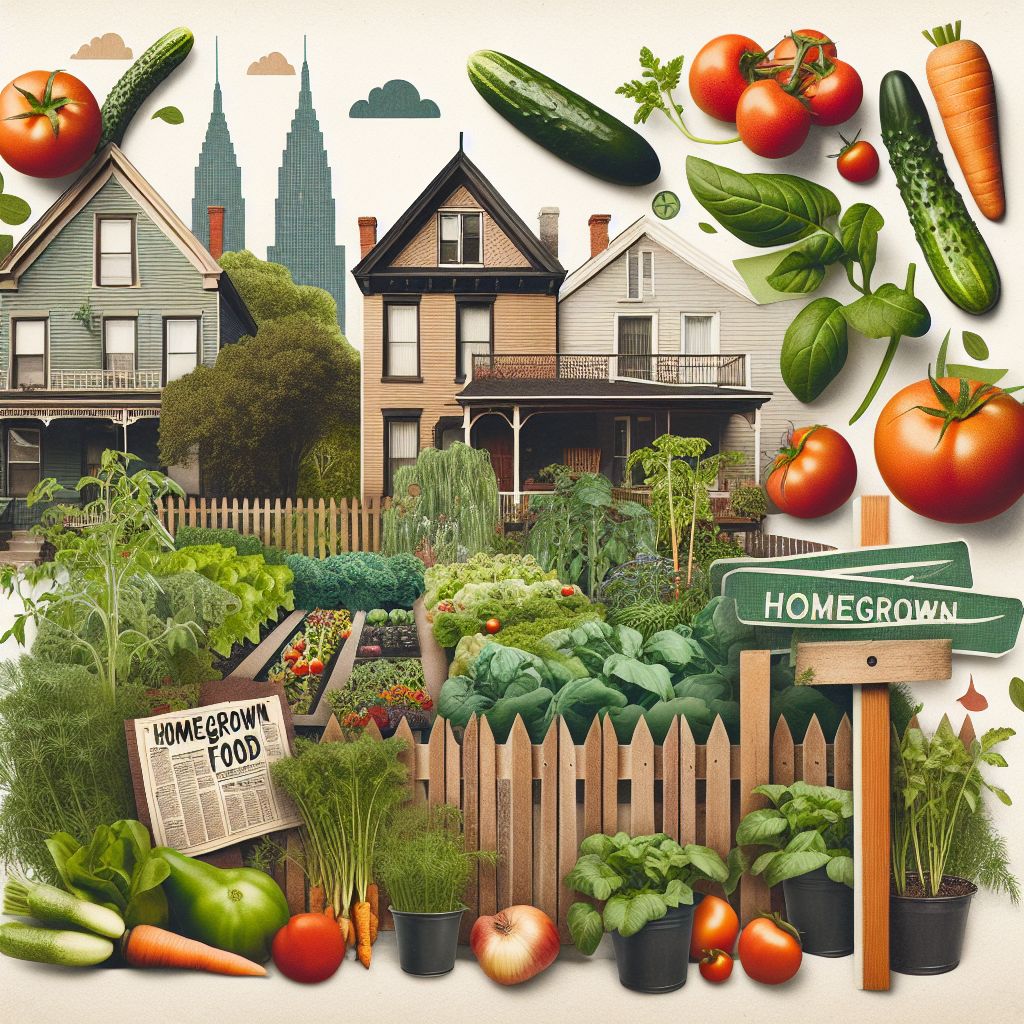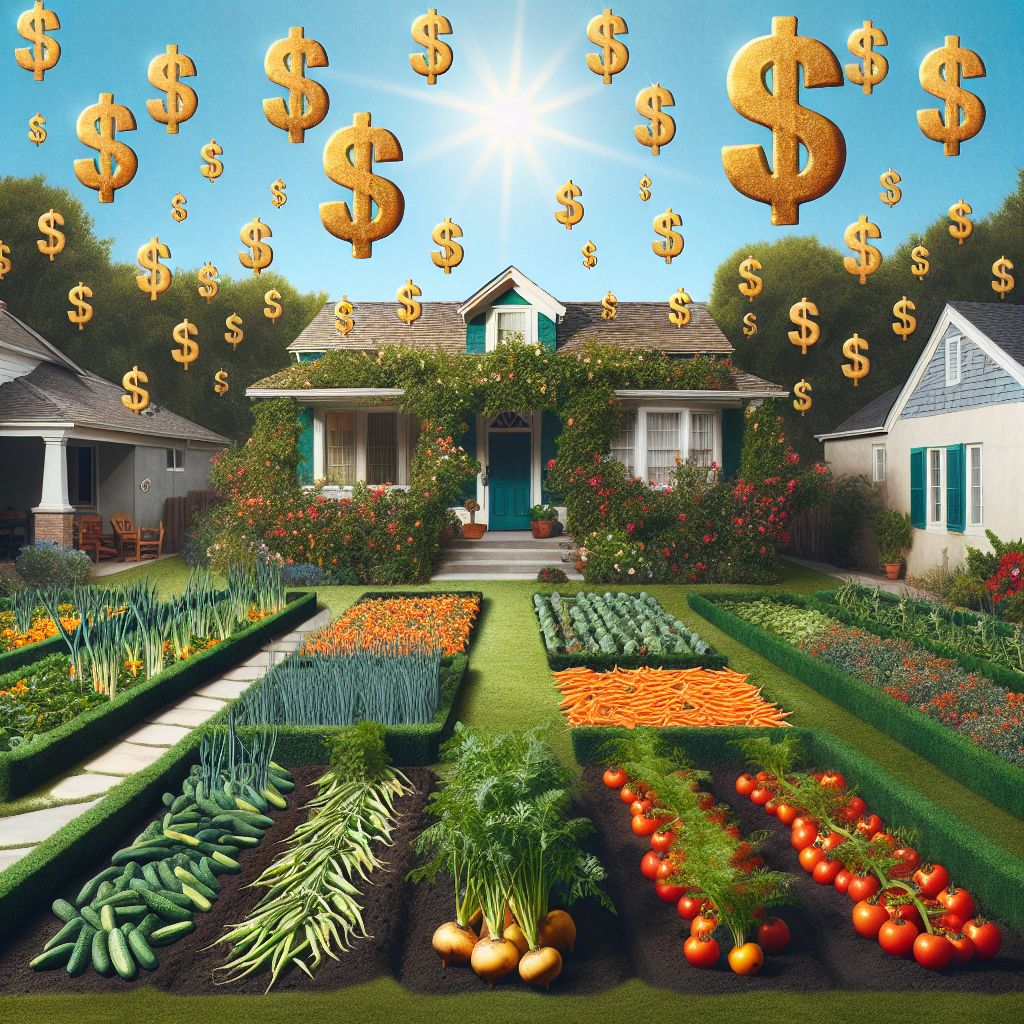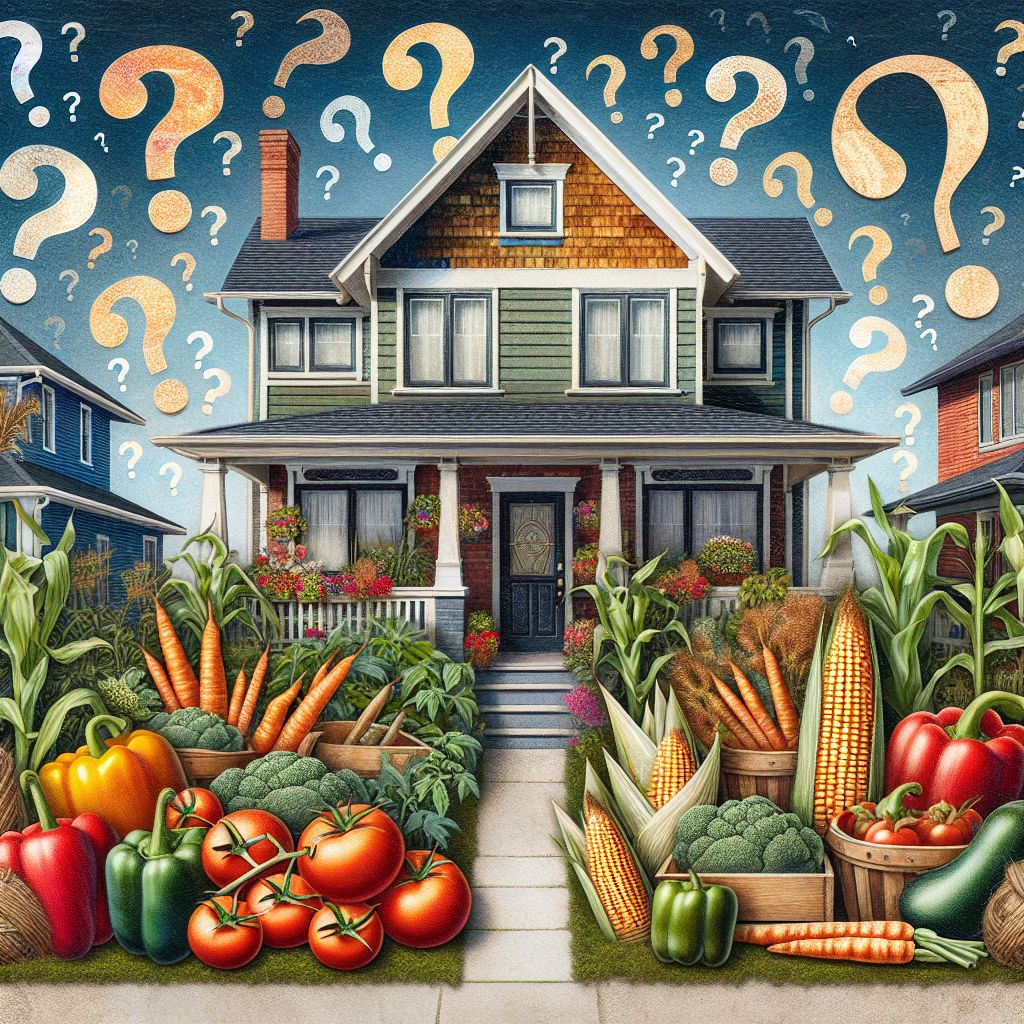
Key Takeaways
- Mostly, it’s legal to grow vegetables in your front yard in New York, but local laws and HOA rules may apply.
- Check with your city or town’s zoning ordinances and homeowners’ association covenants before starting your garden.
- Design your garden to be aesthetically pleasing to help avoid complaints from neighbors.
- Use raised beds and landscaping to integrate your garden into your front yard design seamlessly.
- Get involved in your community to advocate for more garden-friendly regulations if needed.
Green Thumbs Forward: Legality of Front Yard Vegetables in New York
Let’s dive into the specifics of what’s legal and what’s not when it comes to planting veggies in your front yard. New York State doesn’t have a law that outright bans front yard gardens. However, you might face some local regulations that can put a damper on your plans. It’s always better to be informed than to find out after you’ve planted that your tomato plants are against the rules.
New York State vs. Local Laws
While New York State gives the green light on growing food in your front yard, the ultimate decision may come down to your local government. Cities, towns, and villages can have their own set of rules that might restrict the type, size, or location of your garden. So, the first step is to check with your local zoning office. They’ll let you know if there are any specific guidelines you need to follow.
For example, some areas may have restrictions on the height of plants or structures like trellises. Others might require that your garden is set back a certain distance from the property line. These rules aren’t there to squash your gardening dreams; they’re often designed to keep the neighborhood looking tidy and to ensure visibility and safety for everyone.
Cultivating Knowledge: What Every NY Gardener Should Know
Knowledge is power, especially when it comes to urban gardening. Understanding your local laws is key to a successful and legal front yard vegetable garden. If you’re part of a homeowners’ association (HOA), you’ll need to review the covenants, conditions, and restrictions (CC&Rs) that might have additional rules. Some HOAs are stricter than others when it comes to what you can plant and where you can plant it.
Navigating Zoning Laws and HOA Guidelines
Zoning laws and HOA guidelines can seem daunting, but don’t let that stop you. Think of them as the framework within which you can creatively plan your garden. After all, a well-maintained and thoughtfully designed garden can be a source of pride for you and your community.
Zoning Codes You Can’t Ignore
Zoning codes are not just red tape; they’re there for a reason. They help maintain a certain order and aesthetics in the neighborhood. But they can vary significantly from one place to another. Therefore, it’s crucial to get the specifics for your area. You can usually find this information on your city or town’s official website or by visiting the local zoning office.
Most importantly, don’t assume that what applies to your friend’s garden in another part of New York applies to yours. Zoning regulations can change from block to block, so get the scoop directly from the source for your specific location.
HOA Rules: Friend or Foe to Your Garden Plans?
Homeowners’ associations often get a bad rap when it comes to rules and regulations, but they can also be a valuable resource. If you live in a community with an HOA, reach out to them. They can provide guidance and may even offer resources to help you create a garden that meets their standards and enhances the community.
Remember, HOAs are made up of homeowners like yourself, so if you feel the rules are too restrictive, get involved. Attend meetings, voice your opinion, and work towards change.
Green Thumbs Forward: Legality of Front Yard Vegetables in New York
Let’s dive into the specifics of what’s legal and what’s not when it comes to planting veggies in your front yard. New York State doesn’t have a law that outright bans front yard gardens. However, you might face some local regulations that can put a damper on your plans. It’s always better to be informed than to find out after you’ve planted that your tomato plants are against the rules.
New York State vs. Local Laws
While New York State gives the green light on growing food in your front yard, the ultimate decision may come down to your local government. Cities, towns, and villages can have their own set of rules that might restrict the type, size, or location of your garden. So, the first step is to check with your local zoning office. They’ll let you know if there are any specific guidelines you need to follow.
For example, some areas may have restrictions on the height of plants or structures like trellises. Others might require that your garden is set back a certain distance from the property line. These rules aren’t there to squash your gardening dreams; they’re often designed to keep the neighborhood looking tidy and to ensure visibility and safety for everyone.
Cultivating Knowledge: What Every NY Gardener Should Know
Knowledge is power, especially when it comes to urban gardening. Understanding your local laws is key to a successful and legal front yard vegetable garden. If you’re part of a homeowners’ association (HOA), you’ll need to review the covenants, conditions, and restrictions (CC&Rs) that might have additional rules. Some HOAs are stricter than others when it comes to what you can plant and where you can plant it.

Navigating Zoning Laws and HOA Guidelines
Zoning laws and HOA guidelines can seem daunting, but don’t let that stop you. Think of them as the framework within which you can creatively plan your garden. After all, a well-maintained and thoughtfully designed garden can be a source of pride for you and your community.
Zoning Codes You Can’t Ignore
Zoning codes are not just red tape; they’re there for a reason. They help maintain a certain order and aesthetics in the neighborhood. But they can vary significantly from one place to another. Therefore, it’s crucial to get the specifics for your area. You can usually find this information on your city or town’s official website or by visiting the local zoning office.
Most importantly, don’t assume that what applies to your friend’s garden in another part of New York applies to yours. Zoning regulations can change from block to block, so get the scoop directly from the source for your specific location.
HOA Rules: Friend or Foe to Your Garden Plans?
Homeowners’ associations often get a bad rap when it comes to rules and regulations, but they can also be a valuable resource. If you live in a community with an HOA, reach out to them. They can provide guidance and may even offer resources to help you create a garden that meets their standards and enhances the community.
Remember, HOAs are made up of homeowners like yourself, so if you feel the rules are too restrictive, get involved. Attend meetings, voice your opinion, and work towards change. You might find that others in your community share your views and support more garden-friendly policies.
New York State Example Regulations:
| Location | Front Yard Vegetable Gardens Allowed? | Restrictions/Requirements |
|---|---|---|
| New York City | Yes | Must follow GreenThumb community garden policies and NYC Parks rules |
| Syracuse, NY | Yes | No specific restrictions found in local zoning codes |
| Buffalo, NY | Depends on zoning district | Allowed in some residential districts, prohibited in others |
| Rochester, NY | Yes, with limitations | Vegetable gardens must be behind the front main building line |
References:
https://www.nycgovparks.org/pagefiles/186/GreenThumb-Gardeners-Handbook-2023__63e28225c5cf2.pdf
https://www.earthisland.org/journal/index.php/articles/entry/local_laws_ban_front_yard_food_gardens/
https://www.reddit.com/r/Syracuse/comments/luwhxb/is_it_legal_to_grow_a_vegetable_garden_in_your/
https://www.buffalony.gov/DocumentCenter/View/1055/Zoning-Ordinance-PDF
https://www.cityofrochester.gov/article.aspx?id=8589936827
Starting Your Front Yard Garden
Once you’ve navigated the legal landscape, it’s time to start planning your garden. Here’s where you can get creative with what you plant and how you design your space. But remember, a successful garden is more than just what you plant—it’s about how you integrate it into your front yard and your neighborhood.
Your Step-by-Step Planting Guide
- Research: Find out which plants grow well in your area and match your sunlight and soil conditions.
- Design: Sketch a layout of your garden, considering aesthetics and practicalities like plant height and spacing.
- Prepare: Clear the area, improve the soil, and gather all the materials you’ll need.
- Plant: Follow the guidelines for planting depth and spacing, and be sure to water your new plants well.
- Maintain: Keep your garden watered, weeded, and watch for pests. Regular maintenance is key to a healthy garden.
Remember, the goal is to create a garden that not only provides you with fresh produce but also adds to the beauty of your neighborhood. Consider companion planting and adding flowers to attract pollinators and add a splash of color.
Dealing with Pushback: How to Advocate for Your Edible Landscape
If you encounter resistance from neighbors or local officials, it’s important to advocate for your garden in a positive and respectful way. Share the benefits of front yard gardens, such as improved neighborhood aesthetics, increased biodiversity, and access to fresh food. If necessary, gather support from other community members who see the value in what you’re doing.
Keep your garden tidy and well-maintained to show that it’s an asset to the neighborhood, not a nuisance. And if you do run into legal hurdles, don’t be afraid to seek out advice from local gardening groups or legal resources that can help you navigate the situation.
Starting a front yard vegetable garden in New York can be a rewarding endeavor, both for you and your community. With a bit of research and planning, you can create a garden that’s both legal and lovely. So go ahead, plant those seeds, and watch your garden—and your neighborhood—grow.
Designing a Garden That Grows with the Community
When you plant a garden, you’re planting more than seeds—you’re planting the seeds of community. Your front yard garden can become a focal point for neighborhood interaction, a place where conversations start, and friendships grow. It’s not just about the food you produce; it’s about the connections you cultivate along the way.
Fusing Function with Aesthetics: Design Tips for a Welcoming Garden
A well-designed garden is a pleasure to behold and can inspire others in your neighborhood to consider gardening too. To create a space that’s both functional and beautiful, consider the following:
- Plan your layout with both aesthetics and harvest in mind, ensuring that your garden is accessible and easy to maintain.
- Choose a mix of vegetables, herbs, and flowers to create a diverse and colorful palette that appeals to the eye.
- Incorporate elements like stepping stones, garden art, or a bench to invite neighbors to take a closer look and perhaps linger for a chat.
Building Bridges, Not Fences: Using Your Garden to Connect with Neighbors
Your front yard garden can be a bridge that connects you to your neighbors. Share your harvest, offer gardening tips, and maybe even organize a seed exchange. These small acts can turn your garden into a community hub, fostering a sense of belonging and shared purpose.
And don’t forget the little ones! Gardens are fantastic outdoor classrooms for children. Invite neighborhood kids to learn about where food comes from and the importance of taking care of the earth. They’ll love getting their hands dirty and watching plants grow.
Planting More Than Seeds: The Impact on Neighborhoods
The benefits of a front yard garden extend beyond the boundaries of your property. They touch the lives of those around you and can transform the fabric of your neighborhood.
Eat Local: The Ecological Benefits of Front Yard Gardens
Front yard gardens contribute to a healthier environment by reducing the need for transport and packaging associated with store-bought produce. They also promote biodiversity by providing habitats for beneficial insects and birds.
Cutting Down CO2: Nothing’s Closer than Your Front Yard
Did you know that by growing your food, you’re reducing your carbon footprint? It’s true! When you harvest food from your front yard, you’re cutting down on the CO2 emissions that come from transporting food from faraway farms to your plate.
Now that we’ve talked about the legalities, the planning, and the positive impact of front yard gardens, let’s focus on the actual plants. The next part of our journey involves selecting the right plants for your garden, understanding the costs involved, and maintaining your little slice of paradise.
Community Rootedness: How Gardens Can Strengthen Bonds
When you cultivate a garden in your front yard, you’re not just growing vegetables; you’re cultivating community. A garden is a place of common ground – quite literally – where neighbors can come together, share experiences, and help one another. It’s a catalyst for building stronger, more connected neighborhoods.

FAQ
Do I Need a Permit to Grow Vegetables in My Front Yard in New York?
Typically, you don’t need a permit to grow vegetables in your front yard in New York. However, it’s always wise to check with your local government and HOA to ensure there aren’t any specific restrictions or requirements you need to follow.
For example, in some New York neighborhoods, you may need to adhere to certain guidelines regarding the height of plants or garden structures. Always verify this information to stay compliant and avoid potential fines.
What Vegetables Are Best Suited for New York Front Yard Gardens?
Choosing the right vegetables for your New York front yard garden depends on a few factors, such as local climate, soil type, and the amount of sunlight your yard receives. Here are some vegetables that typically do well in New York’s varied climate:
- Tomatoes – they thrive in full sun and warm temperatures.
- Leafy greens like kale and spinach – they can tolerate partial shade and cooler temperatures.
- Carrots and radishes – these root vegetables are hardy and can be planted early in the spring.
- Peppers – they enjoy the heat and can add a pop of color to your garden.
- Herbs like basil and cilantro – these are great for small spaces and can be used fresh from the garden.
How Can I Handle Complaints from Neighbors About My Front Yard Garden?
If you receive complaints from neighbors about your garden, approach the situation with understanding and diplomacy. Listen to their concerns and see if there’s a compromise that can be reached. Keeping your garden tidy, controlling pests, and incorporating decorative elements can help assuage their concerns. Communication is key to maintaining good relationships and resolving issues amicably.
Can an HOA Demand Removal of My Vegetable Plants?
An HOA might have the authority to demand the removal of your vegetable plants if they violate the community’s rules. To avoid this, review your HOA’s guidelines carefully before planting your garden. If you believe the rules are outdated or unreasonable, consider rallying your neighbors to advocate for more garden-friendly policies within the HOA.
What Are Some Environmentally Friendly Pest Control Methods for Front Yard Gardens?
Environmentally friendly pest control is vital for maintaining a healthy garden and ecosystem. Here are some eco-friendly methods to manage pests in your front yard garden:




Leave a Reply